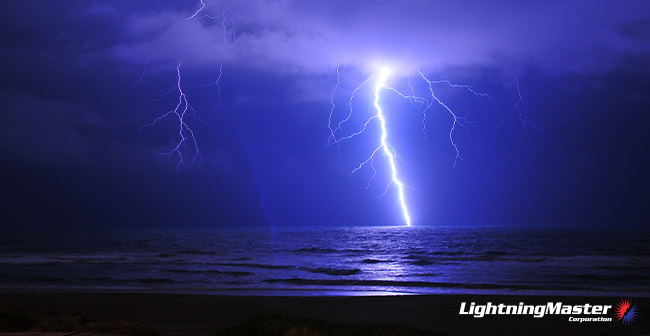Understanding petrified lightning and how it forms.
When lightning strikes the ground, the resultant temperature soars five times hotter than the sun’s surface. It’s a great deal of heat that can melt and fuse silica, sand, and some forms of soil. Petrified lightning, or fulgurite, is the glass formed by lightning striking the ground.
Petrified lightning often appears as a veiny, organic-like artifact made of overheated sand that quickly cools down. It’s a hollow tube in most cases and the interior is similar to glass. You can also find fulgurite with a Lichtenberg figure or a miniature petrified lightning shape.
Where is Petrified Lightning Found?
Petrified lightning can be found around sandy mountain ranges or beaches with frequent lightning strikes. They are however very rare to find. Fortunately, there are a few museums that exhibit fulgurites, such as the Corning Museum of Glass.
How Lightning Makes Glass
Petrified lightning is formed as a result of lightning hitting the ground. When a bolt of lightning hits a sandy surface, the extreme electric power can melt the sand. The melted substance combines with other materials and hardens into glass lumps known as fulgurite.
Currently, scientists are studying petrified lightning in Egypt to piece together a history of the climatic conditions of the region. Over the recent past, lightning has been very rare in the desert of southwest Egypt. Between 1998 and 2005, space satellites hardly detected any lightning strikes in the region.
Surprisingly, fulgurites are common amid the region’s sandy dunes. These lumps and tubes of glass are an indication that lightning used to strike frequently in this region.
Determining the Age of Fulgurite
Recently, Mexican scientists from the National Autonomous University of Mexico studied fulgurites that were collected in Egypt in 1999. When fulgurite is heated, the minerals in these glassy tubes glow. As the fulgurites age, they develop defects and glow less at certain wavelengths of light. By measuring the intensity of the glow when samples were heated, the researchers discovered that the fulgurites formed about 15,000 years ago.
During the same study, the scientists also analyzed the gases trapped inside bubbles in the fulgurite. The chemical composition of these gases indicated that the landscape could have supported grasses and shrubs 15,000 years ago. Today, there is only sand.
Shrubs and grasses only grow in the hot, dry climate of Niger, about 375 miles south of the Egypt site. According to the researchers, the fulgurites were formed when the climate in southwest Egypt was similar to Niger’s present-day climate.
Fulgurites and their gas bubbles provide a great window into the past as such materials remain stable for a long period of time.
Modern-day Lightning Protection
Even if you’re afraid of lightning strikes, the amazing powers of lightning are impressive. Sand struck by lightning can even tell a story of ancient times. However, you shouldn’t take risks with your life or property if you own structures in lightning-prone areas. Effective lightning protection systems are available to help mitigate risks to your employees and property.
Established in 1984, Lightning Master® is a global, full service, static solutions, lightning and surge protection manufacturing company. We serve a wide range of customers including oil, gas, chemical and other industrial facilities. Our complete line of products and systems are backed by our worldwide support and customer service. Lighting Master has become internationally recognized as an industry leader in lightning and static protection.
LMC is a UL Certified Lightning Protection System Installer offering UL Master Labels and UL Listed Stainless Steel Products.
Contact us today at [email protected] or 727-447-6800 to learn more about our products, systems, and consulting services!


